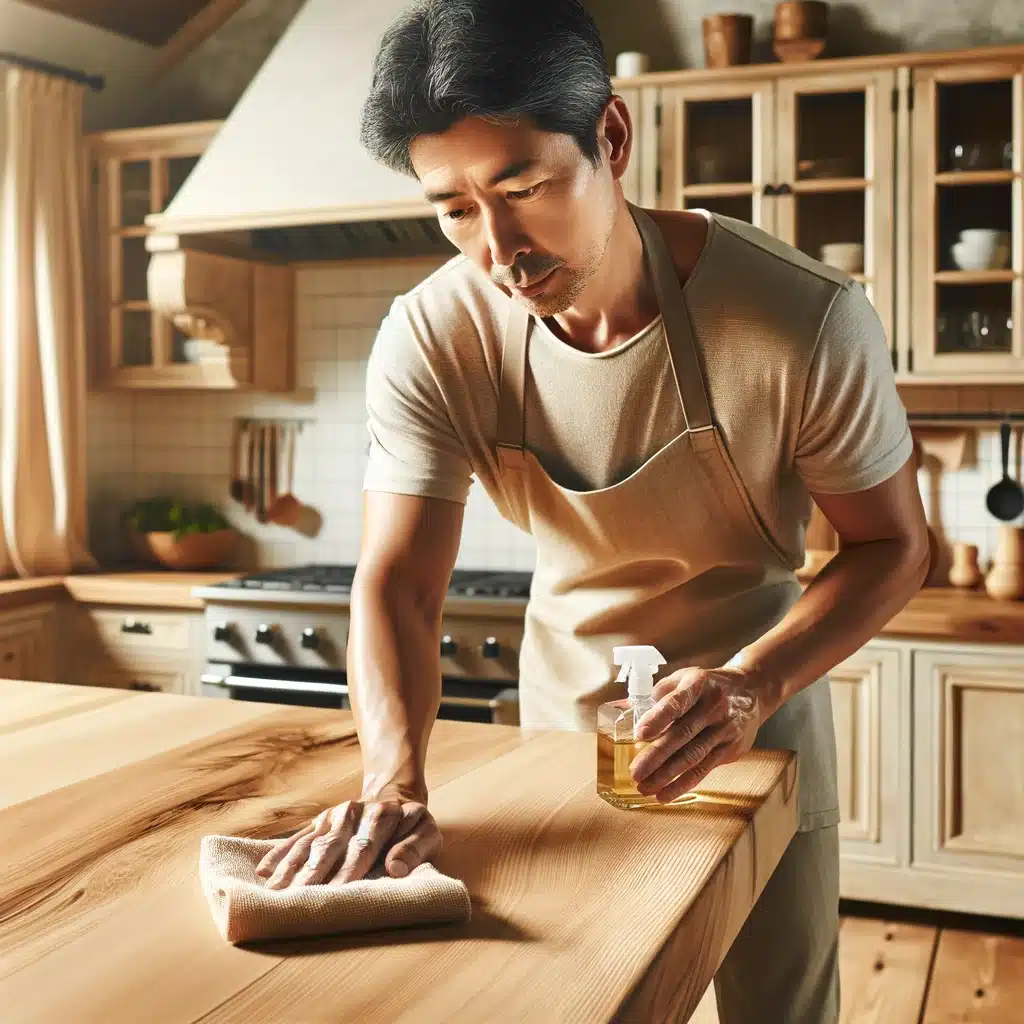7 Natural Ways to Clean and Polish Wood for a Lasting Shine
Wood furniture and surfaces add warmth and elegance to any home, but keeping them in pristine condition can be a bit of a challenge. Fortunately, you don’t have to rely on harsh chemicals to keep your wood items looking their best. Here are seven natural methods to clean and polish wood that not only bring out its beauty but are also eco-friendly and gentle on your furniture. 1. Vinegar and Olive Oil Mixture One of the most effective and gentle ways to care for your wood furniture is by using a mixture of vinegar and olive oil. This combination is not only simple to prepare but also highly effective in maintaining the luster and health of wood surfaces. The acidity of the vinegar gently cleanses the wood, removing dirt and grime without damaging the wood’s natural structure. Meanwhile, the olive oil acts as a nourishing polish, deeply conditioning the wood and enhancing its inherent shine. To make this natural wood cleaner and polish, combine one part white vinegar with three parts olive oil in a bowl or a jar. This ratio ensures that the oil sufficiently coats and protects the wood while the vinegar keeps it clean and bright. Before applying, it’s essential to stir the mixture thoroughly to blend the ingredients well. Using a soft, lint-free cloth, dip it into the mixture and wring out any excess liquid. Gently apply the solution to your wood furniture, always rubbing gently in the direction of the wood grain. This technique ensures that the oil penetrates evenly and prevents any cross-grain scratches that could mar the surface. After applying, take another clean cloth and buff the wood lightly to bring out a more vibrant shine and ensure that no excess oil remains on the surface. This method is particularly beneficial for wood items that are handled frequently or exposed to the elements, as it not only cleans but also provides a protective layer that enhances the wood’s durability and appearance. 2. Lemon Juice and Olive Oil This natural polish not only cleans effectively but also leaves a delightful, citrusy aroma that invigorates any space. Lemon juice, known for its potent cleaning properties, cuts through dirt and buildup without harsh chemicals. It’s particularly effective at tackling greasy residues that can accumulate on kitchen tables and cabinets, making it an excellent choice for areas where food is prepared. When combined with olive oil, this mixture does more than just clean. Olive oil acts as a natural conditioner, penetrating deep into the pores of the wood to restore moisture and protect it from drying out or cracking. This is especially important for wood that may be exposed to heat or air conditioning, which can sap the moisture from wood and leave it looking dull. To prepare this wood polish, mix one part freshly squeezed lemon juice with two parts olive oil. It’s important to use fresh lemon juice rather than bottled for the best results, as fresh lemon juice contains natural enzymes that are effective at breaking down grime. After mixing, apply the solution to a soft cloth, making sure the cloth is damp but not overly wet, which could saturate and damage the wood. Gently rub the cloth over the wood surfaces in your home, following the grain of the wood to avoid any scratches. The olive oil will nourish the wood, while the lemon juice enhances its color and sheen. 3. Beeswax Polish Beeswax polish is an exceptional choice for maintaining and enhancing the natural beauty of wood furniture. This traditional method goes beyond mere surface cleaning to provide a protective barrier that safeguards wood against scratches, moisture, and everyday wear and tear. When beeswax is combined with a nourishing carrier oil like jojoba or coconut oil, it creates a robust polish that not only enhances the wood’s appearance but also fortifies its durability. To prepare your own beeswax wood polish, start by sourcing natural beeswax, which can typically be found at craft stores or online. Melt the beeswax in a double boiler until it becomes liquid. Carefully blend in your choice of carrier oil—jojoba oil is especially good for its long shelf life and mimicking the natural oils found in wood, while coconut oil offers a slightly sweet fragrance and additional antibacterial properties. A good ratio to maintain is one part beeswax to three parts oil, which ensures that the mixture is easy to apply while still being rich enough to penetrate deeply into the wood. Once the beeswax and oil have fully integrated, allow the mixture to cool slightly; it should still be warm enough to be malleable. Using a soft, lint-free cloth, work the warm polish into the wood surfaces, rubbing in circular motions to ensure that the mixture covers evenly. This method allows the wax to fill in tiny pores and scratches, creating a smooth, even surface. After applying the beeswax polish, allow it to sit on the wood for a few minutes to ensure deep penetration. Then, with another clean, soft cloth, buff the wood to a high shine. This final buffing step not only enhances the wood’s natural luster but also helps to harden the protective wax coating, forming a durable seal that repels dust, water, and stains. 4. Tea Brewing Tea brewing offers a surprisingly effective method for cleaning and enriching the appearance of wood furniture. The natural tannins found in black tea make it an excellent choice for gently cleansing and enhancing the natural grain of wood surfaces. These tannins, which give tea its characteristic color and astringency, also have properties that can help to lift dirt and residue without the harsh effects associated with chemical cleaners. To use tea as a cleaning solution for wood, start by brewing a strong pot of black tea. Typically, using one or two more tea bags than you would for drinking creates the ideal concentration for cleaning. Allow the tea to steep until it’s very strong, then let it cool to room temperature to prevent
7 Natural Ways to Clean and Polish Wood for a Lasting Shine Read More »

